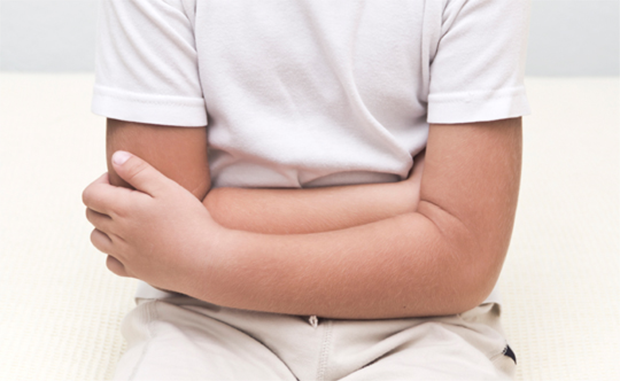|
Has your
child ever come out of the bathroom in tears, saying, “Mommy, it hurts
when I poop?” The likely cause is constipation, a very common problem in
children.
How can you tell if your child is constipated? Besides the obvious
painful bowel movements, look for these typical signs:
Constipation Symptoms
Stomach pain and bloating
Bleeding with bowel movements
Soiling accidents
Sometimes a constipated child might actually appear to have diarrhea,
which can be confusing. What’s happening here is that a large formed
stool has gotten stuck in your child’s rectum, and somewhat liquid stool
gets passed around it.
|
|
 |
|
When a child is constipated, he has less frequent bowel movements, and
when he does “go,” his stool is dry, hard, and painful to pass. There
are many possible causes for constipation, including:
Withholding stool. This means that your child is trying to hold his
bowel movements in -- maybe because he’s stressed about potty training,
maybe because he doesn’t want to use the toilet in certain places (like
school), or maybe because he’s afraid of a painful bathroom experience.
(Constipation can become a vicious cycle -- if it hurts to “poop” once,
the child may be more fearful of going the next time.)
A diet that’s low in fiber or doesn’t include enough liquids (or both)
Side effects of certain medications
Constipation Treatments
There are three primary treatments for most cases of constipation, and
they usually work hand-in-hand:
A stool softener to clear the bowels. These are safe in children, but
should be used under the supervision of your pediatrician.
Two common mistakes that parents make when giving their child a stool
softener for constipation is not using a large enough dose, or stopping
it too soon. For example, you might think that you can stop giving a
stool softener after your child’s first normal-looking bowel movement,
but stopping too soon may just set your child up for another bout of
constipation. Some children may need to stay on a stool softener for a
few weeks. Your doctor can advise you on the right dosing schedule for
your child.
|
|

|
|
A high-fiber diet with plenty of fluids.
This means loading your child’s plate with plenty of fresh fruits and
vegetables, high-fiber cereals, whole grain breads (look for at least
3-5 grams of fiber per serving), and a variety of beans and other
legumes, like chickpeas and lentils. Two good sources of fiber that kids
are often happy to eat are trail mix (let them make their own) and
popcorn with minimal salt or butter. Foods containing probiotics, like
yogurt, can also promote good digestive health.
While focusing on fiber, don’t forget fluids. If your child is eating
plenty of high-fiber food but not getting enough fluid to help flush it
through his system, you can make matters worse. Your child should be
drinking plenty of water throughout the day, along with some milk. Limit
sugary drinks to 4 ounces a day in younger children and 6-8 ounces in
school-aged kids.
Regular toilet time. Encourage your child
to use the toilet first thing in the morning and after every meal or
snack. Particularly for a younger child, you may get better results by
telling, not asking. Instead of suggesting, “Do you need to go to the
bathroom?” simply say, “Time to go to the bathroom now.”
|
|
 |
|
You’ll get the best results if you combine all three of these
approaches. A high-fiber diet isn’t likely to clear up a serious case of
constipation on its own without the help of a stool softener; on the
other hand, once your child stops taking a stool softener, if he stays
on a low-fiber diet and doesn’t get enough healthy fluids, the problem
is likely to happen again.
|